Super Mario & The Occult of Video Games
Although I wasn’t very good at video games, I didn’t realize until recently that Super Mario Bros. connected to me synchronistically—or as some students of the occult say "synchro-mystically". Back in 1989 I was going to school at Wrightwood Elementary and turning down recess to write stories in Mr. Tetley’s third-grade class. I was infatuated with a girl named Sarah Peach. Little did I realize that “Sarah” means “princess” and Super Mario was on a mission to save Princess Peach. Furthermore, my family name is Martinson, which means “of the god of war (Mars, Ares),” “child of Mars,” or “son of Mars (Amen, Ares, etc.).” What does “Mario” mean? It derives from the Roman god of war, Mars. Super Mario (Mars) is on a mission to rescue Princess (Sarah) Peach.
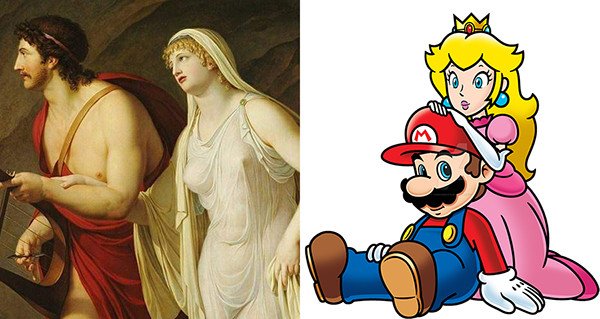
Although there are over fifty different power-ups in the Super Mario franchise, apart from the Super Star, there are three that are significant.
 The Mushroom power-up turns Mario into Big Mario, which makes him tougher. The berserkers (meaning: bear skins) were elite Norse warriors who were said to have fought in a trance-like fury. These is where we get the phrase "going berserk" from. Some historians have proposed that berserker warriors were able to bring on their seemingly unstoppable rage by voluntarily consuming the hallucinogenic mushroom Amanita muscaria, known today on the street as “magic mushrooms.”
The Mushroom power-up turns Mario into Big Mario, which makes him tougher. The berserkers (meaning: bear skins) were elite Norse warriors who were said to have fought in a trance-like fury. These is where we get the phrase "going berserk" from. Some historians have proposed that berserker warriors were able to bring on their seemingly unstoppable rage by voluntarily consuming the hallucinogenic mushroom Amanita muscaria, known today on the street as “magic mushrooms.”
Super Mario is also able to transform himself into a flying raccoon by consuming the Super Leaf power-up. In this form Mario isn’t actually fully transformed into a raccoon, but appears to be wearing part of the pelt of giant raccoon. Similarly, Norse elite warriors would wear bearskins (berserkers), wolf skins (ulfhednar), or the skin of a wild boar (svinfylking). Although a leaf relates to a tree, and raccoons are seen climbing trees and jumping from tree to tree, this recalls the leaf of the marijuana plant. If we take Super Mario’s descent into the Mushroom Kingdom as a psychedelic journey—and the kingdom certainly is a strange place—the Super Leaf relating to a drug makes sense.
The third power-up worth mentioning is the Fire Flower. In the Mushroom Kingdom, when Mario ingests the Fire Flower he is able to throw fireballs at his enemies. In our world, the poppy flower is used to create the drugs opium and heroin. So it seems to me that what we have is a plumber whose high on drugs jumping around smashing bricks, stomping on turtles and desperately trying to rescue a beautiful princess, that perhaps only exists in his drug-addled brain.

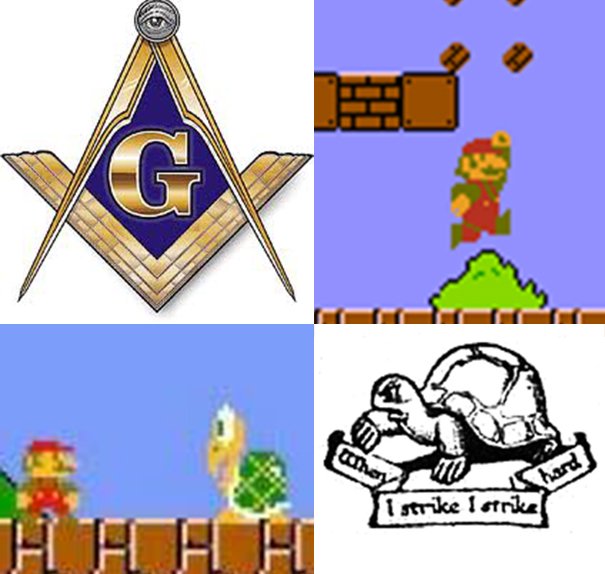
Before excitedly jumping to this conclusion, let’s keep in mind that Mario is a plumber. When Shigeru Miyamoto created Super Mario he could have given Mario any occupation, but he chose plumber. The word “plumber” just-so-happens to have a value of 33 in Pythagorean gematria. Gematria is when you assign a numerical value to each letter in an alphabet and then calculate the total value of words, names, sentences or phrases using that cypher. The number 33 is significant for there are thirty-three degrees in the Scottish Rite of Freemasonry, and Freemasons seem to have a thing for using gematria to hide their secrets in plain sight.

Most famously gematria was used to give us the ominous number 666 from the Revelation of Saint John the Divine. Most people know the verse as, “Here is wisdom. Let him that hath understanding count the number of the beast: for it is the number of a man; and his number is Six hundred threescore and six.” (Revelation 13:18) The truth is that the last line of the verse doesn’t actually say “and his number is six hundred threescore and six.” In the original Greek the line reads: καί αὐτός ἀριθμός χξϚ. John didn’t give us the number 666, he gave us three Greek letters (χξϚ, chi-xi-stigma) which together have a value of 666 in Greek gematria.
I’ve segued into the book Revelation not just to point out that the occult system of gematria was not only used in the Bible, but also because Revelation is important for understanding the occult of video games.
In Revelation 21:16 we read, “And the city lieth foursquare, and the length is as large as the breadth: and he measured the city with the reed, twelve thousand furlongs. The length and the breadth and the height of it are equal.” In other words, the city of Heaven is a cube.
A lot of fundamentalist Christian conspiracy theorists as of late have been freaking out about cube symbolism, and talking about the hexagon and the cube of Saturn, but keep in mind that these people neither read nor understand this occult book although they call it their bible.
Once you understand that the city of Heaven is a cube, then the names of video game systems will make more sense to you.
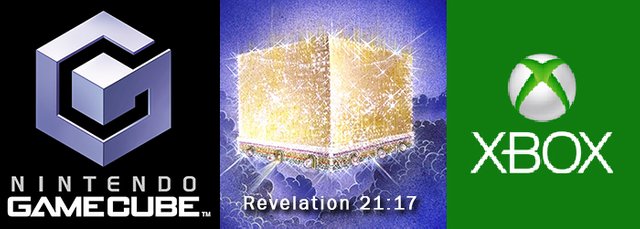
Nintendo roughly means “leave luck to heaven.” How very appropriate that Nintendo released a game console called the Game Cube.
As for Nintendo’s longtime competitor, Sega is merely the word “Ages” spelled backward, and relates to the ages of human existence. Sega’s initial system, the SG-1000, was utterly crushed by Nintendo’s NES, so much so that virtually nobody remembers it but Sega’s first real contender in the ring was called the Genesis, for that is the first age of man. Sega also released the Saturn, which relates to the cube, but that is a discussion beyond the scope of this article.
Microsoft obviously plays into the cube of Heaven with their X-Box, and it should also be noted that the letter X is used to represent the word “Christ.” Thus we have the Christ-Box or Christ-Cube. This, of course, is why Christmas is abbreviated X-mas.
Christ, for the record, is also directly associated with the cube. Saul of Tarsus writes in Ephesians 3:18, “That Christ may dwell in your hearts by faith; that ye, being rooted and grounded in love, May be able to comprehend with all saints what is the breadth, and length, and depth, and height; And to know the love of Christ, which passeth knowledge, that ye might be filled with all the fulness of God.” Various Christian writers have spoken of Christ as a cube as well, such as Jerry Irvan Smith, who writes on page 265 of his book The Cube is Coming, "But my marching orders come from above as I serve the Lord Jesus Christ, the one whose CUBE dominates the attention of the world today."
This look back to my childhood and the early days of video games reminds me of the science fiction author Philip K. Dick, whose visionary mind brought us Blade Runner, Total Recall, The Adjustment Bureau, A Scanner Darkly and Minority Report. In 1977 at a science fiction convention in France, Philip made the following cryptic statement:
“I, in my stories and novels, often write above counterfeit worlds, semi-real worlds as well as deranged private worlds inhabited often by just one person while meantime the other characters either remain in their own worlds throughout or are somehow drawn into one of the peculiar ones. This theme occurs in the corpus of my twenty-seven years of writing. At no time did I have a theoretical or conscious explanation for my preoccupation with these pluraform pseudoworlds but now I think I understand. What I was sensing was the manifold of partially-actualized realities lying tangent to what evidently is the most actualized one: the one which the majority of us, by consensus gentium agree on. […] We are living in a computer-programmed reality, and the only clue we have to it is when some variable is changed and some alteration in our reality occurs. We would have the overwhelming impression that we were reliving the present — déjà vu — perhaps in precisely the same way, hearing the same words, saying the same words. I submit that these impressions are valid and significant. And I will even say this: such an impression is a clue that at some past time point, a variable was changed, reprogrammed as it were, and that because of this an alternative world branched off.”
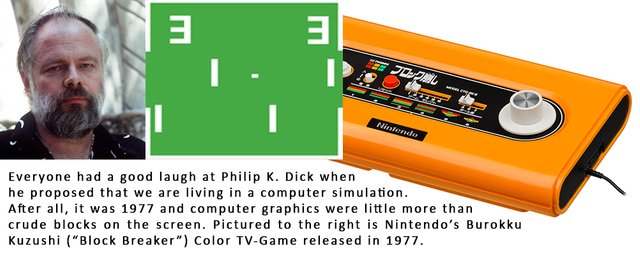
Perhaps you would have to be as high as Super Mario to really consider that you’re living in a computer-programmed reality like the Matrix, but consider this: when Philip K. Dick gave that speech in 1977, the most graphically advanced video game systems were the Atari 2600 and Nintendo’s Burokku Kuzushi (“Block Breaker”). For the record, Nintendo’s Color TV-Game “Block Breaker” was colored orange. The word “orange” has a value of 33 in Pythagorean gematria.
How could anyone have imagined in 1977, graphics so advanced that they could be indistinguishable from real life?
As we look at the video game on the screen, are we taking it for granted that we're actually looking at a representation of our own existence?
Maybe I've taken too many Super Mario mushrooms.

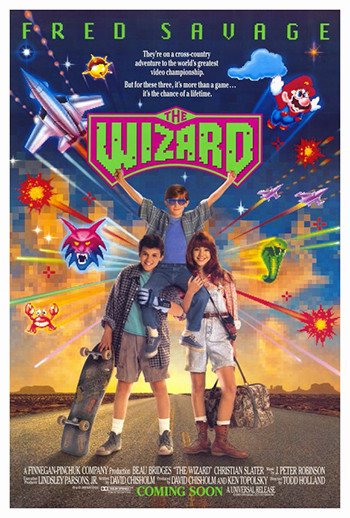


Congratulations @johnmartinson! You have completed some achievement on Steemit and have been rewarded with new badge(s) :
Click on any badge to view your own Board of Honor on SteemitBoard.
For more information about SteemitBoard, click here
If you no longer want to receive notifications, reply to this comment with the word
STOP